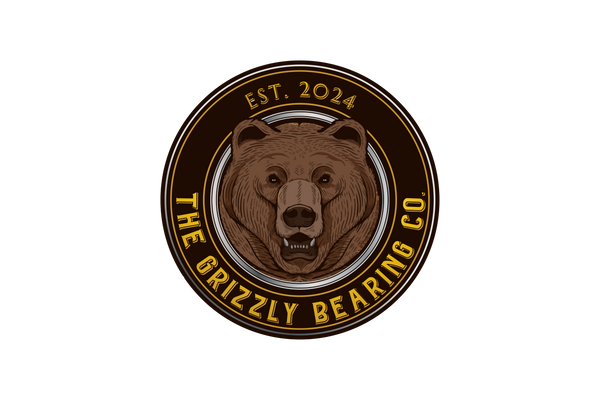Part 1: The Smart Buyer's Pre-Purchase Inspection Checklist
Share
The Smart Buyers - Pre-Purchase Inspection List
Buying a used bike can save you serious money, but only if you know what problems to look for.
Whether you're eyeing a carbon road bike or a full-suspension MTB, this checklist will help you spot potential problems before you hand over your hard-earned money.
When you arrive to inspect a potential "new" bike, the most important thing you can do is to take your time and not allow yourself to be rushed by the Seller. Yes, buying second-hand can be great value but, rushing and missing problems could be a costly mistake.
Frame First: Your Foundation Check
Start with the frame – it's, usually, the most expensive part to replace. If there are serious problems with the frame, then it may not be worth your time checking out the rest of the bike.
Run your hands along all tubes, looking for:
- Cracks, especially around welds and high stress areas;
- Dents that could compromise structural integrity;
- Paint chips and cracks that may be hiding damage underneath;
- Rust on steel frames or corrosion on aluminium; and
- Check that the seat post is not seized.
Wheels, Hubs and Tyres
Spin each wheel and watch for side-to-side movement. Slight movement, otherwise known as a buckle in the wheel, might need truing i.e. spoke adjustments but a severe buckle could mean either a new rim and spokes (if the hub is in good condition) or a brand new wheel.
(Although the wheel may look buckled, check that the tyre carcass is not deformed as this can give the illusion of a buckled wheel).
Check:
- Tyre wear patterns. Uneven wear patterns on the back tyre could indicate alignment issues and uneven wear patterns on the front tyre could indicate problems with the fork;
- Tension in each wheel and check for loose or broken spokes;
- Hub bearings: Grab the wheel and move side-to-side to check for play and spin the wheel to check for any rough or rumbling spinning noises; and
- For wear on the braking surface on the rim, the rim surface will feel concave.
Drivetrain
Drivetrains take a lot of abuse, so chances are problems may arise in this area of the bike.
Look for:
- Chain stretch (a worn chain will accelerate wear on the cassette);
- Cassette teeth that are hooked or shark-finned;
- Derailleur alignment and smooth shifting through all gears; and
- Misalignment of the gear hanger: Check the mech body for damage. This can be a sign of a bent gear hanger. To check the gear hanger correctly, a mech hanger alignment tool should be used (however, this may not be possible depending on where/ how you are inspecting the bike).
Test ride in multiple gears. Skipping under load usually means worn components.
Brake Performance Check
For rim brakes, check pad wear and rim surface condition.
For disc brakes, check the:
- Pad thickness (should be more than 1mm)
- Rotor condition (no deep scoring, warping or discolouration) and
- The feel of the lever (should be firm, not spongy).
- Check the minimum thickness of the rotor, this is normally stamped on the rotor i.e. Shimano is 1.5mm.
The Bearing
This is a check that we would like to cover in more detail, so we will do this in next week's Blog as a stand-alone article.
If you're buying a second hand full-sus MTB, worn or seized bearings could cost hundreds of £s to replace and fit or, if the damage has not been caught in time, you could be replacing expensive components.
The same can be said for the likes of wheel bearings and headset bearings.
Therefore, next week, we'll take our time and go through these thoroughly.
MTB Specific Checks
- Shock
- Check for movement in the shock eyelets; and
- Check the lock out is working and for oil leaks. Compress the shock. If it feels squelchy this can indicate that oil has been leaking.
- Front Fork
- Check for pitting in the upper stanchions;
- Check the condition of the dust seals;
- Apply the front brake and rock the front fork to check for any movement in the lower leg bushes and listen for any creaking from the steerer tube; and
- Check that the fork lockout works correctly.
Red Flags to Walk Away From
Ultimately, the decision rests with you. However, there are issues that are just not worth the effort and expense and could turn into false economy: -
- Cracked frames (unless you're buying it for parts);
- Seized components that will not move;
- Missing serial numbers (this could indicate that the bike has been stolen); and
- A seller who won't let you test ride the bike or is trying to rush you through the sale.
Sensible Questions to Ask
- "How old is the bike"
- "Why are you selling?"
- "What maintenance and servicing has been done recently?"
- "Have you completed the servicing or was it done at a bike shop?"
- "Any crashes or major repairs i.e. carbon frame repairs?"
- "Do you have receipts for expensive components?"
- "If the bike has a tubeless set-up, when was the last time the fluid was changed?"
Wrapping Up
The key thing to remember is that just because the bike may be new-ish and sparkly clean, it doesn't mean that it iss without issues, so its important to take your time, check the bike thoroughly and ask the right questions. Most importantly, go with your gut! If something doesn't feel right, then don't be afraid to walk away.
Let us know on our Facebook/ Instagram post if there is anything else that you check for. Have you had a dodgy experience buying second hand or have you managed to get yourself an unbelievable bargain? We'd love to know.
Have a great week!

